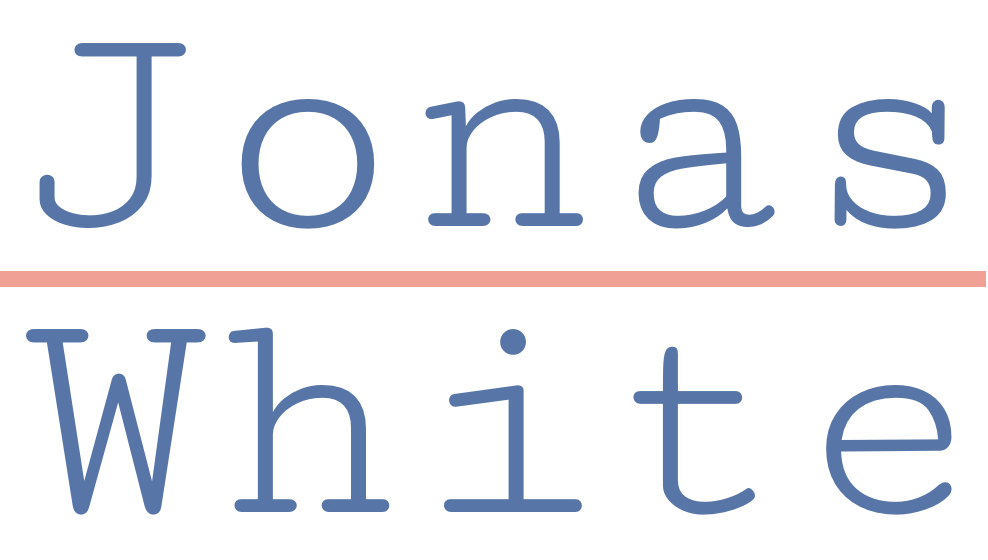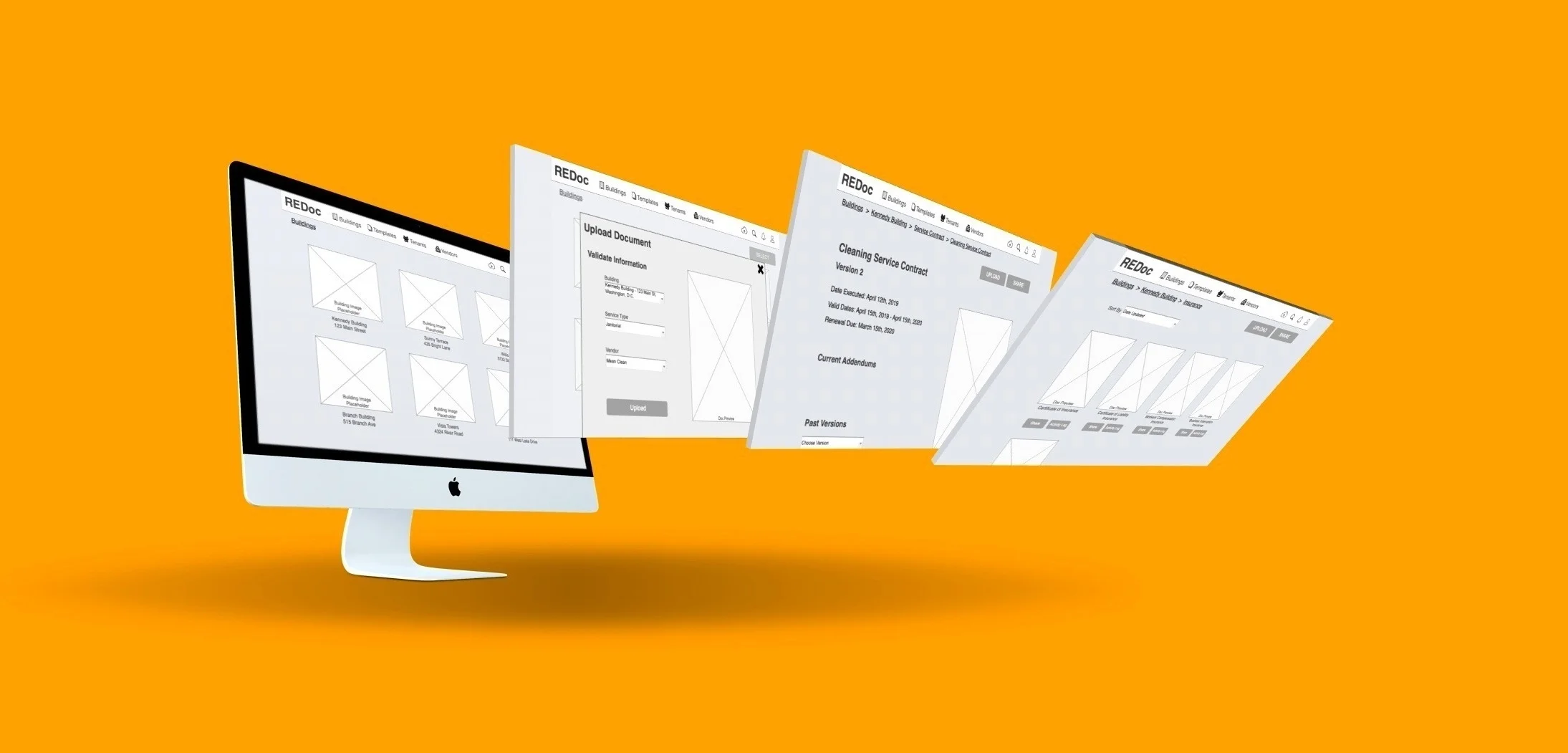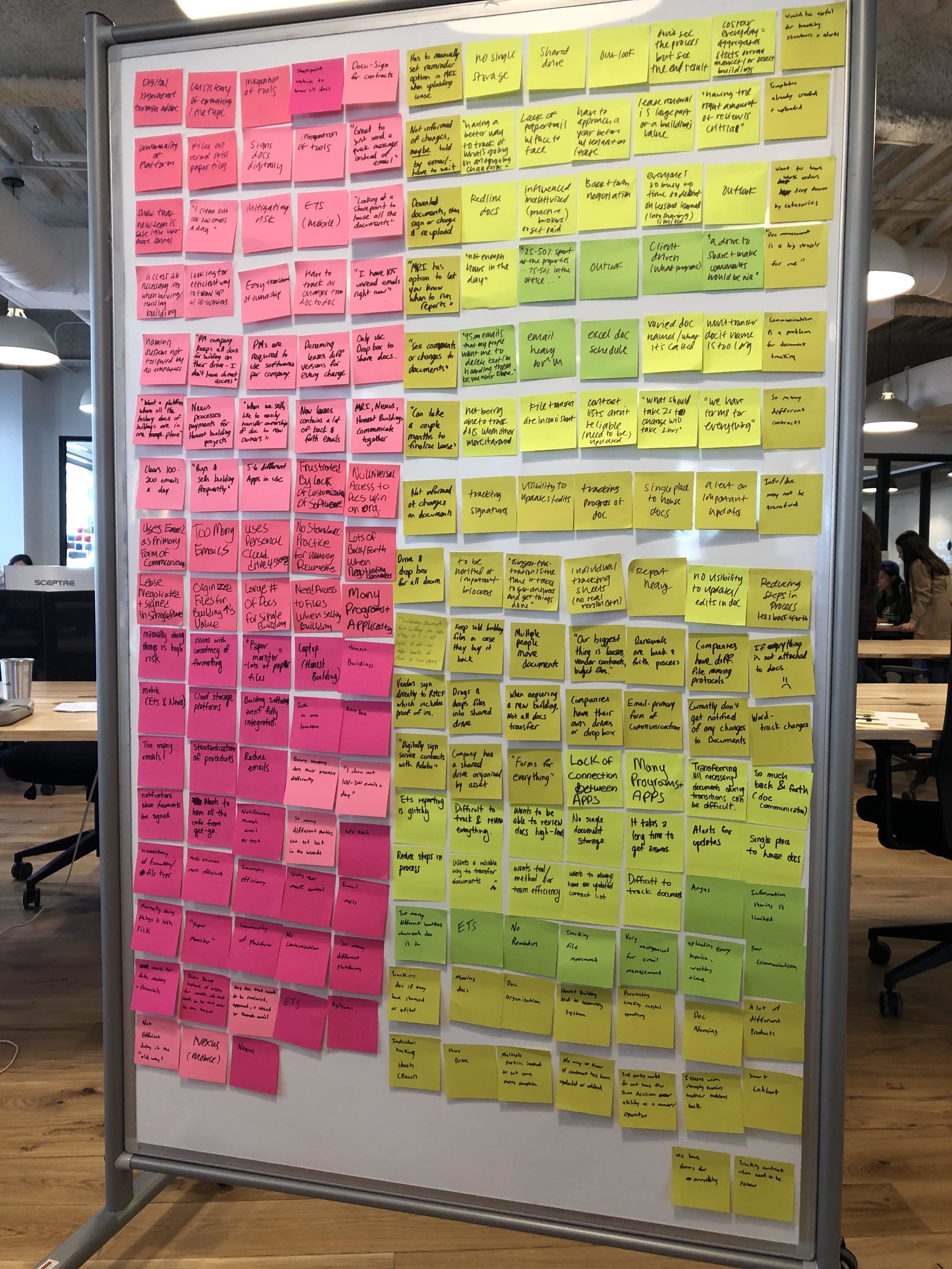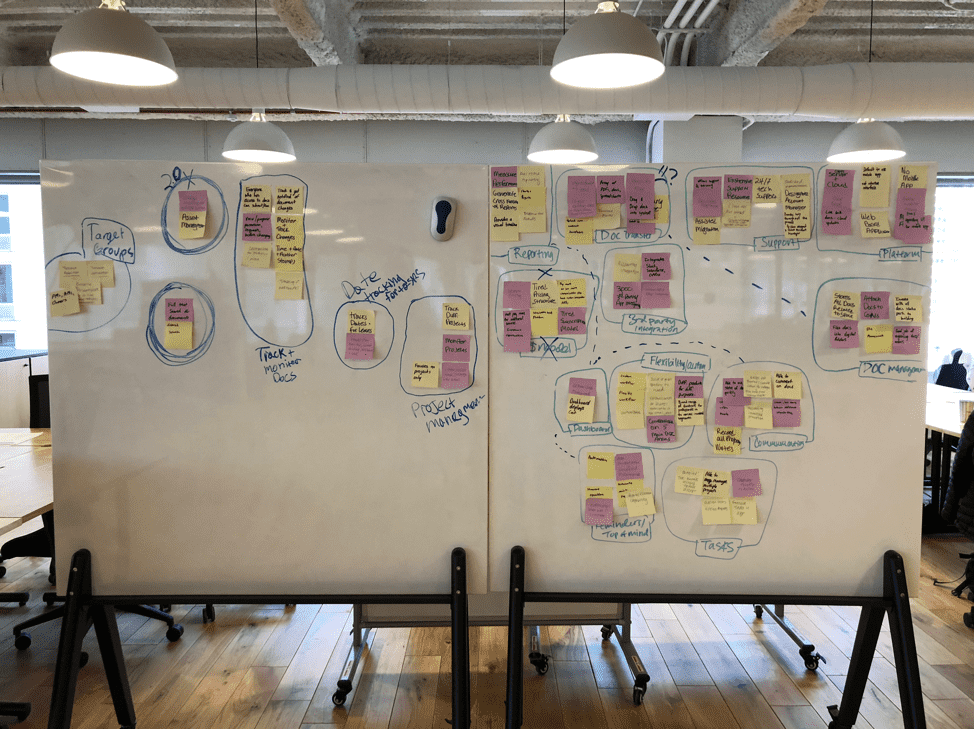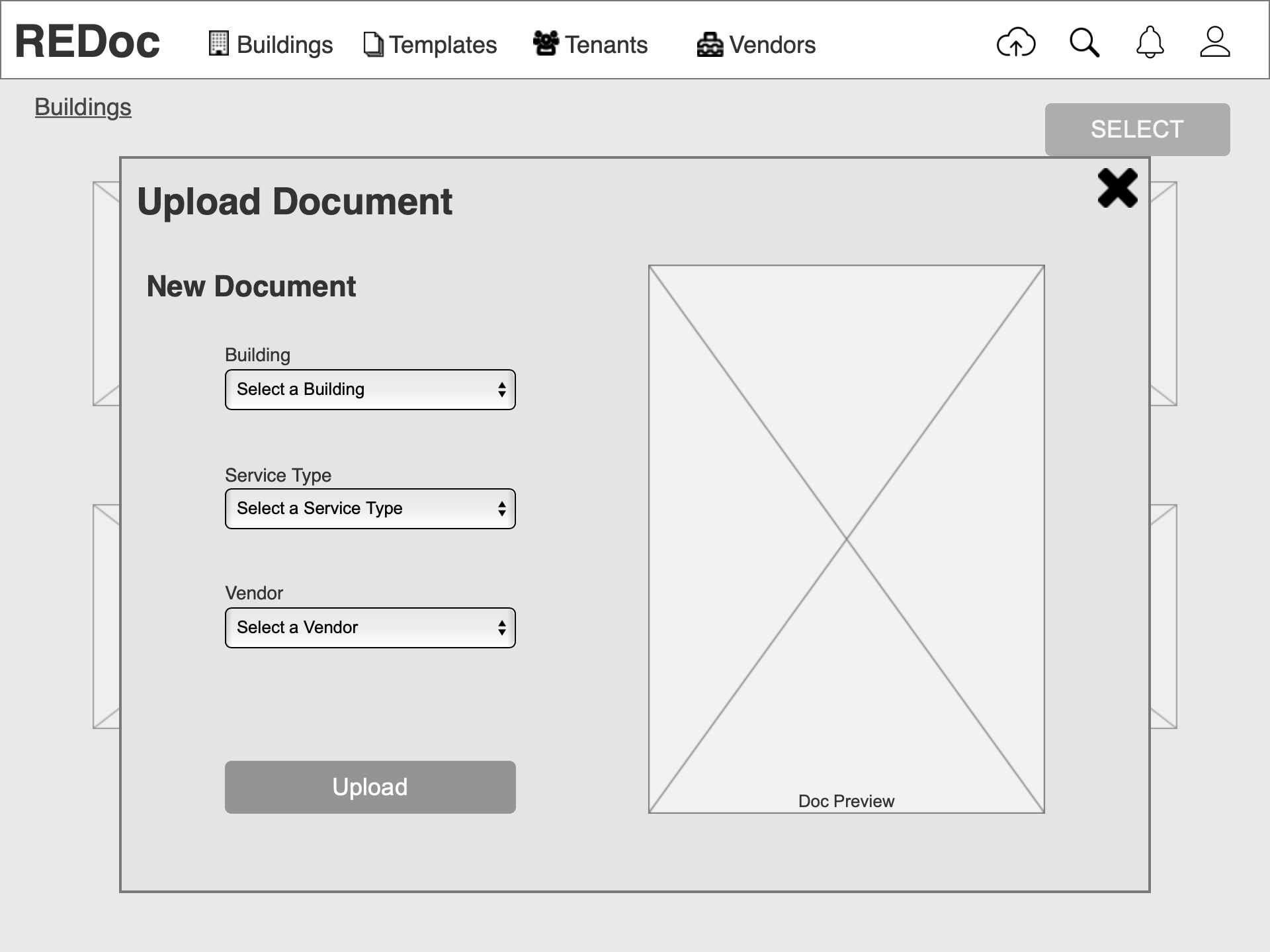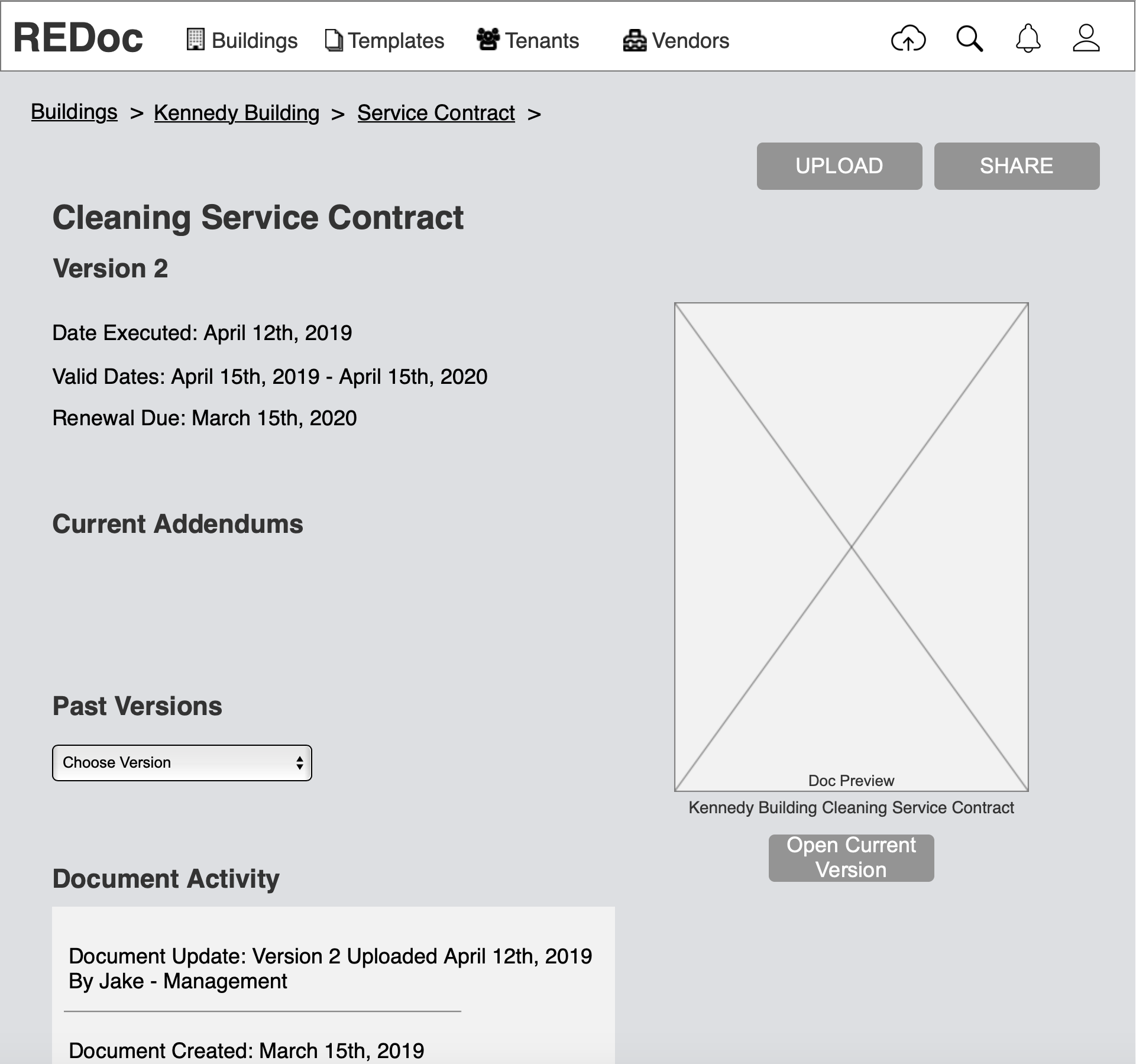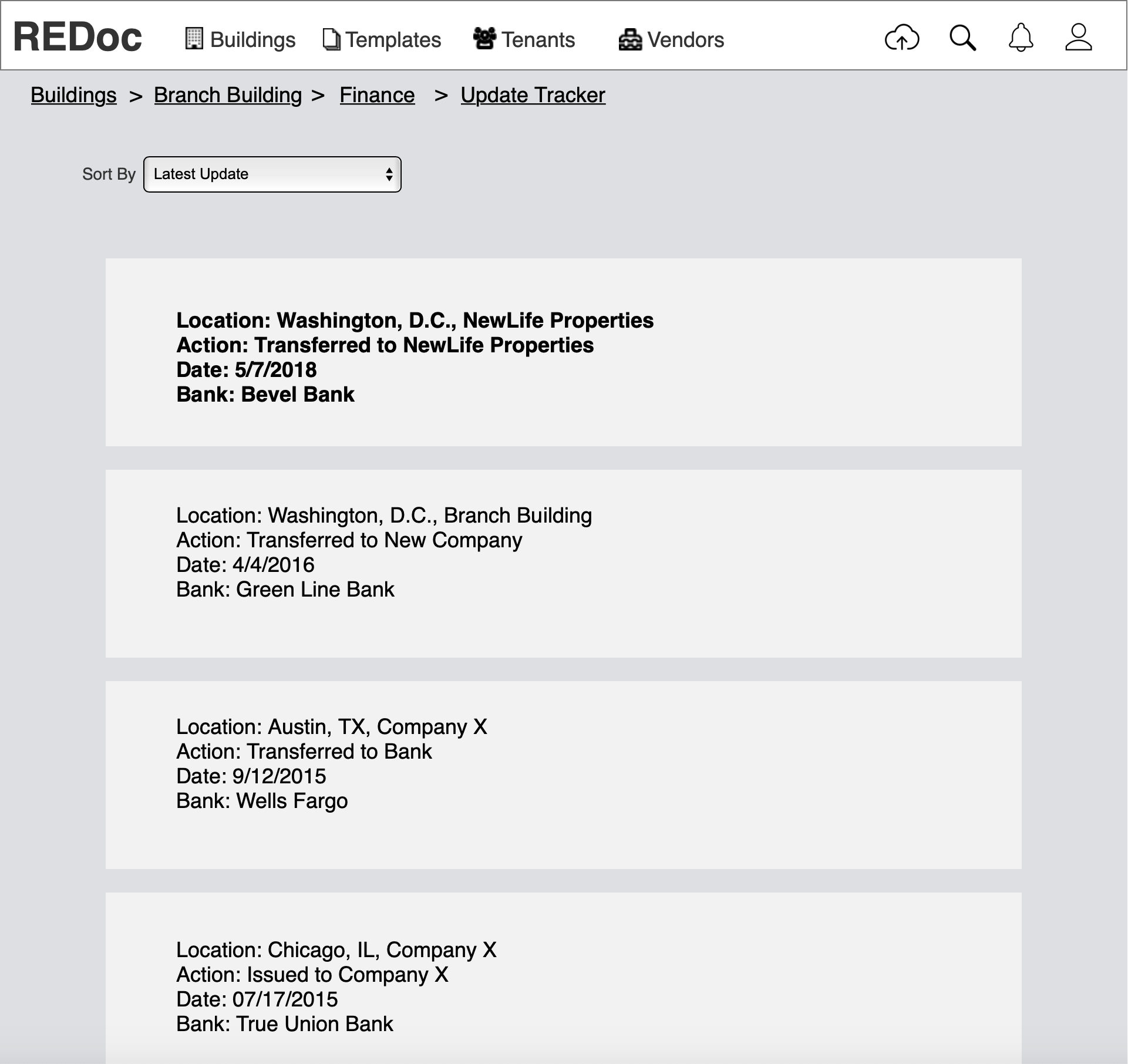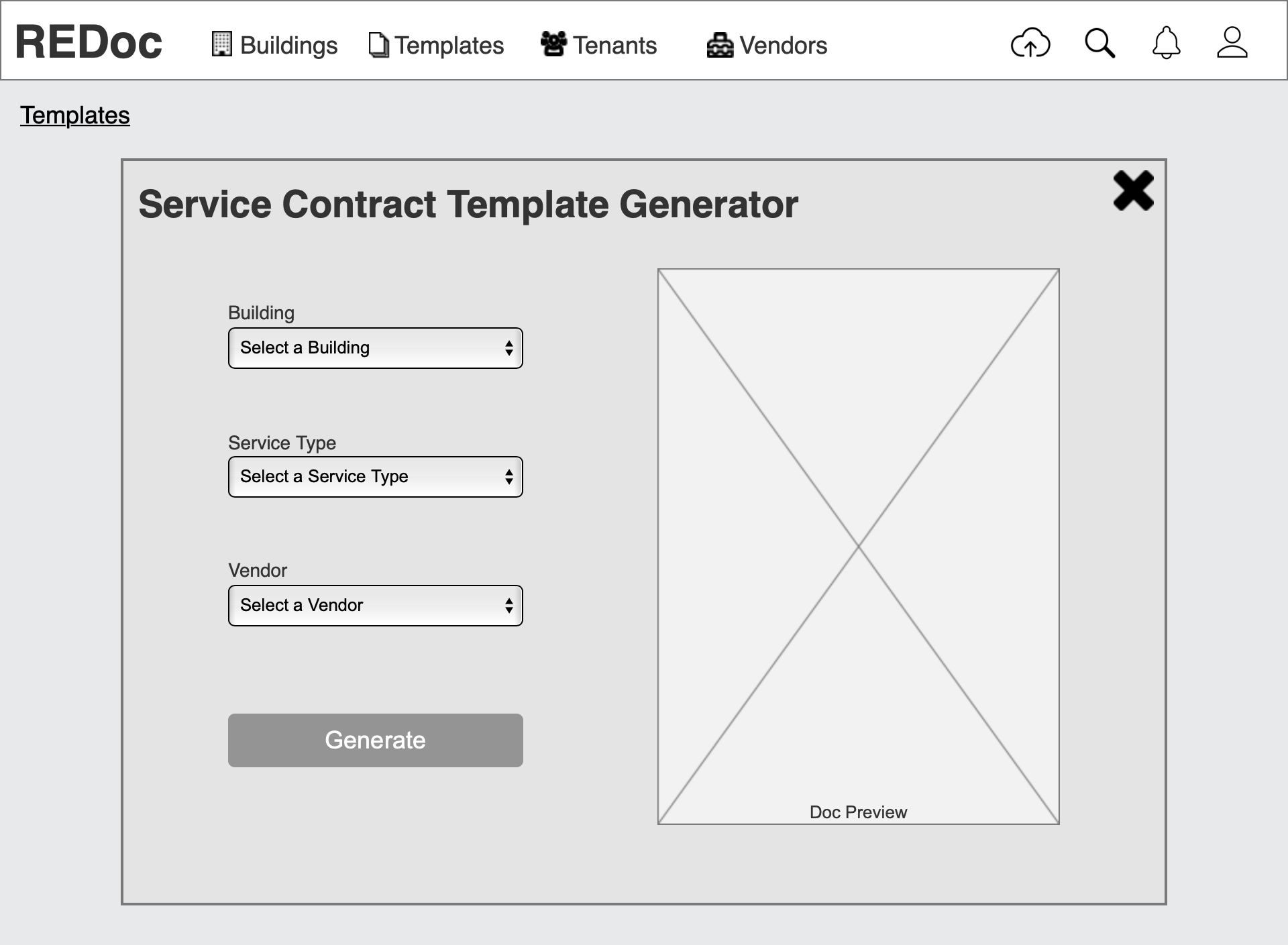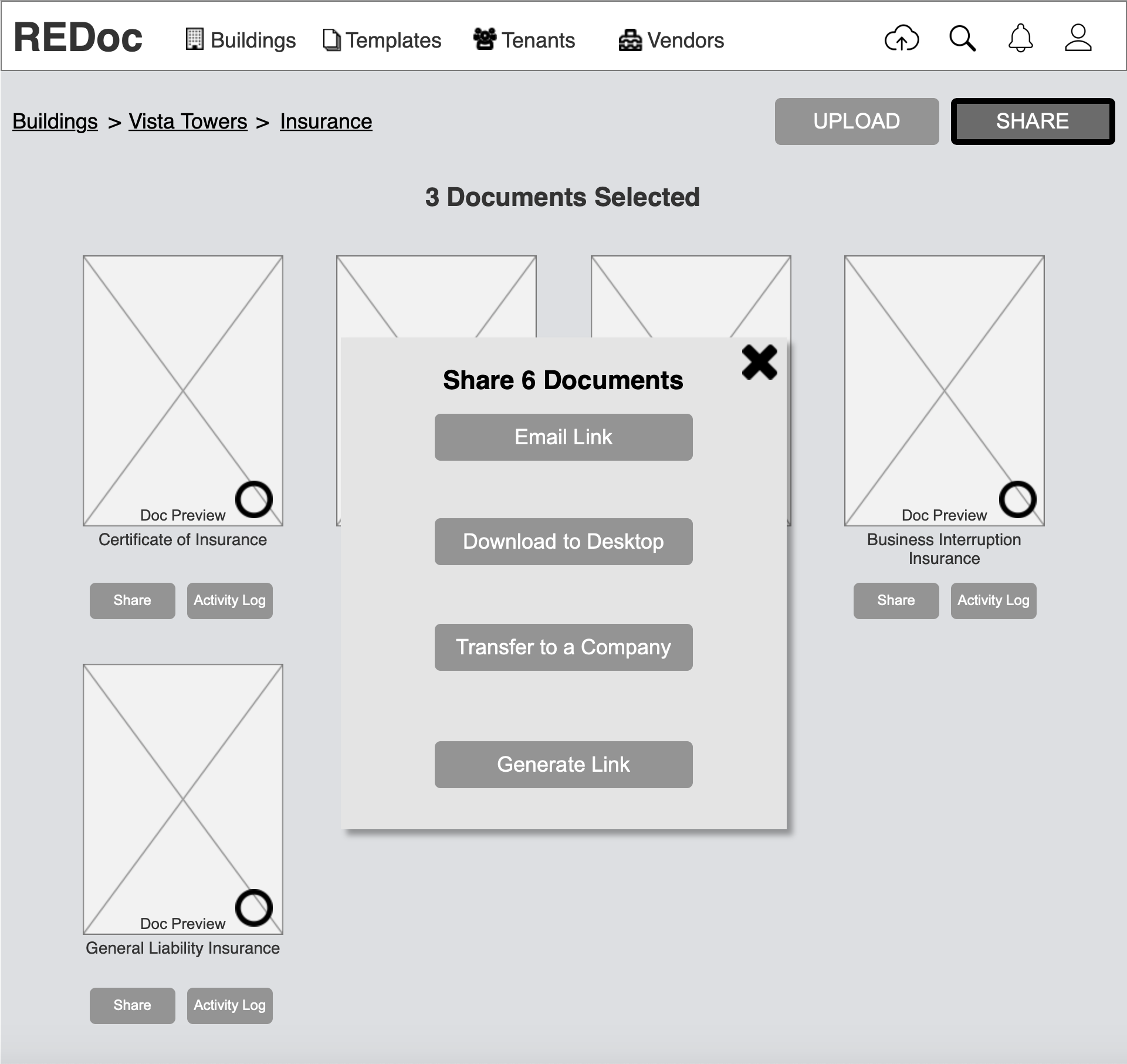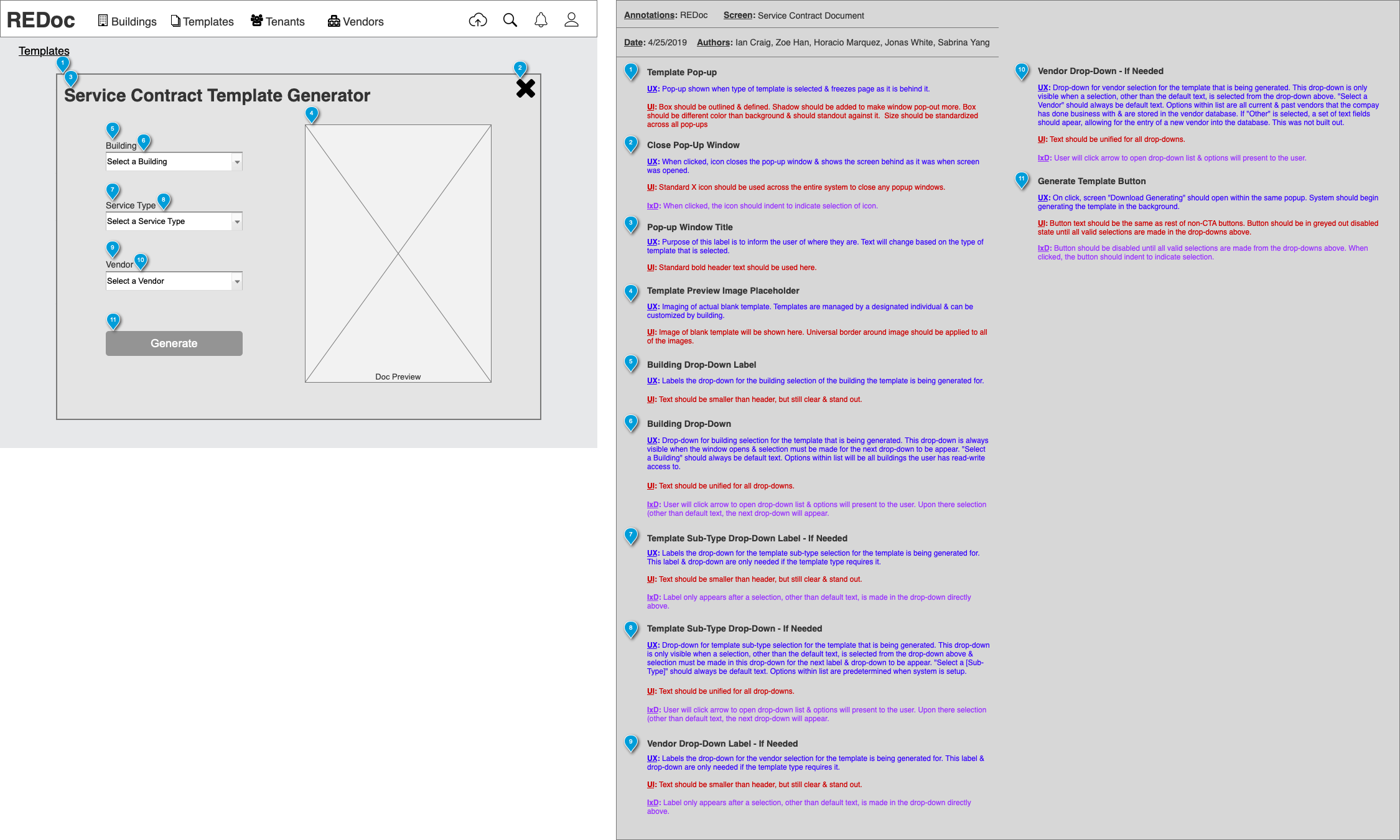REDoc
Client
REDoc
Project Length
4 Weeks - 3 Total Sprints
Tools
Axure RP, Sketch, Xtensio
Deliverables
User Persona, Final Prototype, Annotated Wireframes, Site Map
Overview
REDoc was a seed-stage startup with the goal of creating a SaaS digital document storage system for the commercial real estate (CRE) industry. Working on a team of five designers, we were tasked by REDoc to work in a hybrid waterfall-agile environment to understand, define, and design a solution for CRE professionals. In particular, REDoc wanted us to focus on how these professionals manage, store, and organize building and tenant-related documents. My team and I worked to design and test a cloud-based document storage and tracking application.
Meet the Client
When we engaged with REDoc, they were a seed-stage remote startup wanting to help the CRE industry better manage its documents and business process. Before the start of this project, REDoc had a web-based minimum viable product (MVP) that they used to demonstrate the intended features and functionality to potential users and investors. With REDoc still in the seed stage, the business's core goals were still being formed. To aid in this process, the stakeholders were seeking validation of the core idea for the product. They envisioned the product as a centralized hub for a CRE property manager to manage communications with the various parties they interact with, i.e., tenants, brokers, and vendors.
Client’s Business Aspirations
Success for this product in the client’s eyes was defined in two ways:
“Implementation and use of product by CRE companies, with specific use by the property manager and owners.”
Assumptions & Goals
After meeting with the REDoc team and reading through the project brief they provided, we formed some initial assumptions about the project and the product we were tasked to create. These assumptions were:
With the wide scope of this, it was important to keep ourselves grounded and open-minded, which we achieved by creating the following research objectives outlining what we wanted to understand:
Education Through Investigation
With a better understanding of the task, we began research on the CRE industry to better understand its current state and trends within the industry. We also wanted to determine if there was an actual need for the product the client envisioned.
The insight that there was a need for optimization of document management within the CRE industry and a willingness to implement a digital solution gave us the confidence we needed to proceed with our research.
Evaluating the Competition
Our initial research surfaced many CRE platforms that appeared to solve the same problem we were tasked to explore. We conducted a competitive analysis to identify the saturation of the market and any areas of opportunity within it. We chose competitors based on how similar the products they offered were to the solution envisioned by the client. Here are the six direct competitors we looked at with their key strengths:
We found that even though many of the platforms offer a document management functionality, none do so in a clean, thoughtful manner. Additionally, the functionality is often buried within other functionalities on these platforms, making it hard to view or find specific documents and manage versions. With this knowledge, we felt confident there was room within the market of CRE technology for REDoc to exist.
Talking with People
With our newly gained knowledge of the CRE industry, we knew it was time to start talking to the people who are in the industry to validate our developed assumptions deduced from our research. Our client provided us with a diverse group of subject matter experts (SME) and users to interview. Here is how they broke out:
Synthesis of Research Insights
To organize all of the insights we have gained from this research, we did two affinity mapping activities, one for the competitive and domain research and one for the interviews.
Key Takeaways from Research
Shared Knowledge Saves Time
Inconsistent processes with documents and CRE applications cause inefficiencies in workflows, preventing property managers sufficient time to focus on value creation for their properties
“In real estate, the same documents can be called different things, depending on your company and location, so identifying documents can be a point of frustration.” — User
Emails are Temporary Solutions
Emails are the primary form of communication regardless of different software and products available as a replacement and, for many, act as a secondary way to manage and store documents
“I have 95,000 emails that my people want me to delete but I’m hoarding them because you never know when you’ll need them.” — User
Inconsistent Document Storage
Platforms like Google Drive or Dropbox are currently being used as temporary solutions to the problem of document storage, but these platforms are not globally managed and every individual has their own approach to their use
“I have my own filing protocol...But everybody has [their] own...from asset manager to asset manager, building to building, they put stuff in different places.” — SME
Flexibility and Customization
Users need a customized way to work, view, track, manage, and communicate at a high-level or day-to-day level, all of which varies depending on the company
“One manager for JLL could be doing things one way and another [manager] down the street, is definitely going to be doing something different, because they are all doing what the owners of the properties they are managing direct.” — SME
At this point, we realized our research was pointing us toward an off-the-shelf solution, such as Google Drive or Dropbox. However, after analyzing a build vs. buy scenario, building a new product made more sense for three reasons:
Existing off-the-shelf solutions do not offer the ability to set standards for the naming and storage of documents
Existing off-the-shelf solutions only offer limited ability to control access to documents
The CRE industry’s needs are so niche that they require a custom solution to meet them
Defining the User
The product, as described by the client, had a multitude of actual users all with different roles, goals, and motivations. With the limited timeframe of this project as well as to ensure our end product provided the best possible experience to one key user group, it was important to approach our design with a single, solid user persona.
Defining the Problem & Design Guides
With our research confirming an opportunity space for the platform REDoc envisioned and our user confirming the need for such a platform, we had to define the problem space we wanted to solve. Based on all of our research, we defined the problem as:
The overloaded property manager needs to systemize document processes in a centralized platform because it would regulate communication from various parties to optimize workflows in order to allow for more time to facilitate other building obligations.
To help direct our designs, we created design principles based on our research as to what Lisa and the client wanted and needed from the solution.
Brainstorming & Ideation
With our problem clearly laid out, it was time to start solving it. We took our problem statements as well as knowledge of Lisa’s goals and frustrations, and through several rounds of brainstorming, my team and I came up with 10 different ideas of ways to solve the problem statement. We took these 10 ideas and sketched out how we saw them designed and implemented. We then looked at everyone’s ideations for each concept and discussed how we saw them being combined. Based on these discussions, we re-ideated them out into full-fledged low-fidelity concepts.
Testing Concepts & Findings
We performed remote concept testing with four CRE professionals with various backgrounds. We received positive and negative feedback on each concept we presented to the user. However, four of the 10 stood out, not because they received the most positive feedback but because the feedback we received indicated that these concepts had the potential to evolve into a solution that served the needs of Lisa in the most cohesive and pleasant way possible. Here are the four concepts with the insight we gained from each.
Storage
“Every company stores things differently and it is completely driven by the individual. When a person leaves, there’s a chance that they may have saved some documents in their email.” — User
Could be beneficial for different teams and different companies to work together
Storage drives are currently being used but not in a structured or organized way
Templates
"If I knew this had the absolute final version, I would take the time to go into the system instead of [my] drive to get the template.” — User
Users liked the potential of efficiencies with this concept
Lets people be more self-sufficient in their workflows
Lots of different templates are used currently, so users see value in having them all in one place
Communication of Workflow
“[It’s currently] not effectively collaborating and we move very fast, we don’t get right feedback from right people. Looking for tool to communicate in real-time.” — User
Users saw this as an organizational tool that could provide individuals transparency to document workflows
Allows for visibility/accountability of all parties within the workflow process
Helps individuals know exactly what they need to accomplish now and in the future
Notifications
“[It’s] beneficial when [Asset Manager] or [Property Manager] changes, transfer of those deadlines to a new person, it’d house it in an open location for whoever has responsibility to that property and [we] won’t need to recreate that or miss something due.” — User
Can push things along, fewer delays, can see who needs to review documents
How customizable the notifications are can impact the desirability of this function
Moving Forward
Based on this feedback, our knowledge of Lisa, and feedback from the client after presenting our concept testing findings, we determined that we could incorporate these concepts into a final product. The three areas of focus for our proposed solution would be:
The Prototype
With so many possible functionalities falling under these three focus areas, we needed to prioritize and test the ones Lisa would use and take advantage of most daily.
Usability Tests
We created seven mock scenarios based on how Lisa would interact with REDoc, particularly with the functionalities laid out above, to test them for usability. We tested the solution with five users from various backgrounds to ensure we had diverse feedback.
Findings
Our users provided a wealth of feedback on the usability of our prototype. From this, we identified several aspects we could adjust to improve the overall usability of the prototype. Some of the major changes included simplifying the iconography throughout the site, changing the landing page of the document activity page to make it more straightforward, adding call-to-action buttons under all documents for uniformity, and adding the ability to send individual documents within a folder instead of the entire folder. With these changes and a few other minor tweaks to some of the vernacular, we put together a final cohesive MVP prototype for the client.
Final Prototype
This is the final prototype as we delivered it to the client:
Client Feedback
After presenting our prototype to the client, they expressed positive feelings towards our findings. They shared that they were happy with the direction we took the designs. Their only concern was how other users would use the platform and what it would look like for them. We communicated our mutual concern for this, but with the time constraints of this project, we could only focus on one user. We did encourage them to conduct additional research for these users to base designs on.
Wrapping It All Up
Since our clients needed to align internally on their next steps, we produced a set of annotated wireframes written for multiple audiences with our intentions and reasoning for all elements of the prototype.
To help the client understand how the platform is structured, as well as knowing the organization of the file structure of our solution was the keystone to our solution’s success, we built a site map.
Future Considerations & Recommendations
With the data and insights we gained from our research and the understanding that REDoc’s user base would transcend that of just property managers, we put together a set of recommendations for the future of REDoc. This is what we laid out to the client:
Outlook Integration
Users wanted to understand if the alerts were customizable and also pre-integrated with their Outlook, as it may be a quicker way to get to what needs their attention.
Mobile App Roadmap
Multiple users mentioned in our interviews how much they use their mobile phones for email and communication. Because of this, we recommended adapting REDoc to a mobile responsive interface for efficient notifications of document updates or issues that require their attention.
Third-Party Permissions
To further streamline and provide more transparency in workflows, we recommend adding functionality to customize access/permission controls for third parties so that the transfer of documents is secure and visible to all parties involved.
Calendar View for Notifications
Some users were interested in understanding if notifications or alerts would have a calendar view/a way to look ahead on what’s also coming up (i.e., automated notifications related to expiring contracts), so testing a calendar view for notifications would be a future recommendation.
